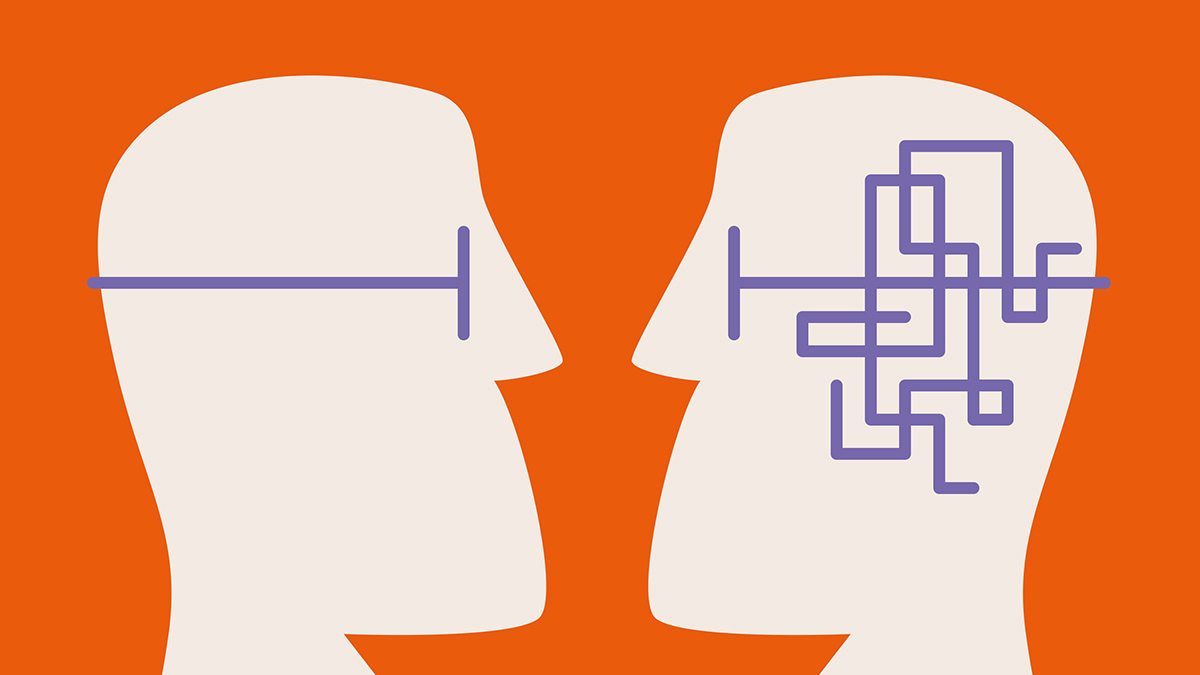Innovation and Technology
Four Game-Changing Quantum Computer Types

What Is Quantum Computing?
Quantum computing refers to a new approach to computing that harnesses some of the strange and powerful properties of quantum mechanics, such as entanglement and superposition. Instead of using traditional "bits" (ones and zeros) like a classical computer, quantum computers use "qubits" that are spookily able to exist in more than one state simultaneously. This means they can potentially solve some very complex mathematical problems, such as those involving optimization problems or simulating complex real-world systems like molecular physics – far faster than existing computers.
So What Are The Different “Types” Of Quantum Computers?
Several distinct quantum computing methodologies have emerged, each leveraging quantum properties in different ways, making them suitable for carrying out different types of computation. Here’s an overview of some of the most popular:
Quantum Annealing
This is a quantum computing methodology that’s particularly well-suited to solving optimization problems. These are computations that require finding the best combination of a large number of variables. It can be of use in real-world scenarios ranging from planning the most efficient route for multi-drop delivery drivers to optimizing stock portfolios. D-Wave is recognized as a leader in this field of quantum computing and has worked with companies, including Volkswagen, to create systems that use annealing methodology to optimize assembly line packaging operations and delivery logistics.
Superconducting Quantum Computers
One of the most mature quantum computing methods involves building circuits from superconductive materials such as niobium or aluminum, cooled to near absolute zero temperatures. This allows qubits to exist in superposition states of both one and zero simultaneously, where they can be manipulated by microwaves. In simple terms, this lets them carry out computational logic operations (and/or/not etc) in a way that lets them explore multiple possible solutions to a problem in parallel, rather than one at a time. Superconductive quantum computing is being pioneered by companies such as IBM and Google and has real-world applications in drug discovery, artificial intelligence, and encryption.
Trapped Ion Quantum Computers
This involves using positively charged atoms (ions) trapped and held within a 3D space in a way that entirely isolates it from the outside world. This means that it can be held in its superposition state for a very long time rather than decohering into one or zero. Lasers are used to switch the ions between different states as required for calculations, as well as to retrieve the information that forms the "answer" to the question that needs to be solved. Leaders in this field of quantum computing include IonQ, which has worked with the United States Air Force to create secure quantum networking technology for communicating between drones and ground stations.
Photonic Quantum Computers
This involves harnessing photons, which are light waves, and manipulating them using optical components like beam splitters, lenses, and mirrors. Having no mass, light waves are not affected by temperature. This means that photonic quantum computing doesn’t require super-low temperatures and a specially configured environment. Another benefit of being light beams is that the qubits encoded in photons can maintain their coherence over relatively long distances. Real-world applications for it have been found in quantum cryptography and communications, and leaders in the field include Xanadu.
Where Next For Quantum?
Although real-world use cases for quantum computing are increasing, much of the work in the field is still purely hypothetical, and various other methods are under development in labs and academic institutions. Other research is focused on reducing the error rate of quantum computing caused by the delicate nature of qubits held in a quantum state. It’s also worth noting that most quantum computing taking place today involves a hybrid model of quantum and classical methodologies. As research and development continue, there’s no doubt we’ll start to see more breakthroughs in the journey towards practical, scalable, and useful quantum computing.
FAQs
- What is quantum computing?
Quantum computing is a new approach to computing that harnesses some of the strange and powerful properties of quantum mechanics, such as entanglement and superposition. - What are the different types of quantum computers?
Several distinct quantum computing methodologies have emerged, including quantum annealing, superconducting quantum computers, trapped ion quantum computers, and photonic quantum computers. - What are the applications of quantum computing?
Quantum computing has real-world applications in areas such as optimization, drug discovery, artificial intelligence, and encryption, among others.
Innovation and Technology
Financial Services in the Digital Age: How Banks and Financial Institutions Can Adapt

In the era of digital transformation strategies, the financial services sector is undergoing a significant overhaul. With the rise of digital banking, mobile payments, and online lending, traditional banks and financial institutions must adapt to stay competitive. The digital age has brought about a new era of convenience, speed, and accessibility, and financial institutions must leverage these advancements to meet the evolving needs of their customers.
Understanding the Digital Landscape
The digital landscape is characterized by rapid technological advancements, changing consumer behavior, and increasing competition from fintech companies. To remain relevant, financial institutions must understand the key trends and technologies driving this landscape, including cloud computing, artificial intelligence, blockchain, and the Internet of Things (IoT). By embracing these technologies, banks and financial institutions can improve operational efficiency, enhance customer experience, and reduce costs.
Key Trends in Digital Banking
Digital banking has become the norm, with online and mobile banking channels becoming the primary means of interaction between banks and their customers. Some key trends in digital banking include the use of mobile wallets, contactless payments, and personalized banking services. Additionally, the rise of digital-only banks and neobanks has disrupted traditional banking models, offering customers a more agile and flexible banking experience.
Impact of Fintech on Traditional Banking
The emergence of fintech companies has significant implications for traditional banks and financial institutions. Fintech companies have introduced innovative products and services, such as peer-to-peer lending, robo-advisory, and digital payment systems, which have attracted a large customer base. To compete with these new entrants, traditional banks must invest in digital transformation, leveraging technologies like AI, machine learning, and blockchain to improve their services and stay relevant.
Adapting to the Digital Age
To adapt to the digital age, banks and financial institutions must undergo a significant transformation, focusing on digitalization, innovation, and customer-centricity. This involves investing in digital infrastructure, developing new products and services, and enhancing customer experience through personalized and omnichannel engagement. Additionally, financial institutions must prioritize cybersecurity, ensuring the security and integrity of customer data in a digital environment.
Digital Transformation Strategies
Effective digital transformation strategies involve a combination of short-term and long-term initiatives. In the short term, banks can focus on digitizing existing processes, improving online and mobile banking channels, and introducing new digital products and services. In the long term, financial institutions can invest in emerging technologies like AI, blockchain, and IoT, to develop innovative and disruptive business models.
Role of Innovation and R&D
Innovation and research and development (R&D) play a critical role in the digital transformation of financial institutions. By investing in R&D, banks can develop new products and services, improve existing ones, and stay ahead of the competition. Innovation labs, incubators, and accelerators can provide a platform for testing new ideas, collaborating with fintech companies, and developing proofs of concept.
Enhancing Customer Experience
In the digital age, customer experience is paramount, and financial institutions must prioritize personalized, omnichannel, and seamless engagement. This involves leveraging data analytics and AI to understand customer behavior, preferences, and needs, and developing targeted marketing campaigns and product offerings. Additionally, banks must invest in user-friendly digital channels, ensuring that customers can easily access and manage their financial services.
Importance of Data Analytics
Data analytics is critical in enhancing customer experience, enabling financial institutions to gain insights into customer behavior and preferences. By leveraging data analytics, banks can develop targeted marketing campaigns, personalize product offerings, and improve customer engagement. Additionally, data analytics can help financial institutions identify areas of improvement, optimize operations, and reduce costs.
Role of AI and Machine Learning
AI and machine learning can significantly enhance customer experience, enabling financial institutions to offer personalized and proactive services. AI-powered chatbots and virtual assistants can provide 24/7 customer support, while machine learning algorithms can help banks detect and prevent fraudulent activities. Additionally, AI and machine learning can improve risk management, enabling financial institutions to make more informed lending decisions.
Conclusion
In conclusion, the digital age has brought about significant changes in the financial services sector, and banks and financial institutions must adapt to stay competitive. By leveraging digital transformation strategies, investing in innovation and R&D, and prioritizing customer experience, financial institutions can improve operational efficiency, enhance customer engagement, and reduce costs. As the financial services sector continues to evolve, it is essential for banks and financial institutions to stay agile, innovative, and customer-centric, embracing the opportunities and challenges of the digital age.
Frequently Asked Questions (FAQs)
Q: What is digital transformation in banking?
A: Digital transformation in banking refers to the process of leveraging digital technologies to improve operational efficiency, enhance customer experience, and reduce costs.
Q: How can banks adapt to the digital age?
A: Banks can adapt to the digital age by investing in digital infrastructure, developing new products and services, and enhancing customer experience through personalized and omnichannel engagement.
Q: What is the role of fintech in the digital age?
A: Fintech companies have introduced innovative products and services, such as peer-to-peer lending, robo-advisory, and digital payment systems, which have attracted a large customer base and disrupted traditional banking models.
Q: How can banks leverage AI and machine learning?
A: Banks can leverage AI and machine learning to enhance customer experience, detect and prevent fraudulent activities, and improve risk management, enabling them to make more informed lending decisions.
Q: What is the importance of data analytics in banking?
A: Data analytics is critical in enhancing customer experience, enabling financial institutions to gain insights into customer behavior and preferences, develop targeted marketing campaigns, and improve customer engagement.
Innovation and Technology
Fixing Chatbots Requires Psychology, Not Technology

AI-powered chatbots are becoming the new standard for managing product inquiries, complaints, and refunds—interactions critical to customer satisfaction, brand perception, and sales. According to one recent survey, 85% of customer service leaders are already exploring a customer-facing AI solution. If your company doesn’t have one yet, it likely will soon.
The Role of AI in Customer Service
The integration of AI into customer service operations is transforming how companies interact with their customers. AI-powered chatbots can handle a wide range of tasks, from answering frequently asked questions and providing basic support to more complex issues like processing complaints and facilitating refunds. This not only improves the efficiency of customer service teams but also enhances the customer experience by providing immediate responses and solutions.
Benefits of Implementing AI-Powered Chatbots
The benefits of implementing AI-powered chatbots are multifaceted. They include:
- Enhanced Customer Experience: AI-powered chatbots can provide 24/7 support, ensuring that customers receive assistance whenever they need it.
- Increased Efficiency: By automating routine inquiries, human customer service representatives can focus on more complex and emotionally demanding issues, leading to higher job satisfaction and better outcomes for customers.
- Cost Savings: Implementing AI-powered chatbots can significantly reduce the operational costs associated with customer service, as they can handle a large volume of inquiries without the need for additional staffing.
Challenges and Considerations
Despite the advantages, there are challenges and considerations companies must address when implementing AI-powered chatbots. These include ensuring the chatbot’s understanding and response to customer inquiries are accurate and helpful, integrating the chatbot with existing customer service systems, and maintaining a balance between automated and human interaction to avoid frustrating customers with complex issues.
Overcoming the Challenges
To overcome these challenges, companies should invest in:
- High-Quality Training Data: The performance of an AI-powered chatbot is only as good as the data it’s trained on. Ensuring that the training data is comprehensive, accurate, and reflects a wide range of customer inquiries and scenarios is crucial.
- Continuous Monitoring and Improvement: Regularly reviewing the chatbot’s interactions and making necessary adjustments can help in improving its effectiveness and customer satisfaction ratings.
- Hybrid Approach: Implementing a system that seamlessly transfers customers to human representatives when the chatbot cannot resolve an issue can help in preventing customer frustration and ensuring that all customer needs are met.
Conclusion
The adoption of AI-powered chatbots is a significant step forward in customer service, offering the potential for improved efficiency, enhanced customer experience, and cost savings. As technology continues to evolve, we can expect to see even more sophisticated applications of AI in managing customer interactions. Companies that embrace this technology and work to overcome its challenges are likely to see significant benefits in terms of customer satisfaction, brand loyalty, and ultimately, their bottom line.
FAQs
- Q: What is the primary benefit of using AI-powered chatbots in customer service?
A: The primary benefit is the ability to provide immediate, 24/7 support to customers, enhancing their experience and improving the efficiency of customer service operations. - Q: How can companies ensure the effectiveness of AI-powered chatbots?
A: Companies can ensure effectiveness by using high-quality training data, continuously monitoring and improving the chatbot’s performance, and implementing a hybrid approach that combines automated and human interaction. - Q: Will AI-powered chatbots replace human customer service representatives?
A: While AI-powered chatbots can handle a significant volume of customer inquiries, they are not likely to completely replace human representatives, especially for complex and emotionally demanding issues that require empathy and personalized support.
Innovation and Technology
5 Rules Innovative Minds Follow

Introduction to High-Agency Thinking
In today’s fast-paced, ultra-competitive working world, innovation and high-agency thinking go hand-in-hand. The most influential change agents are not just tech savvy, they are high agency. High-agency individuals do not wait for perfect conditions or permission to act. They create momentum. They bend systems, break molds and often rebuild better ones.
Characteristics of High-Agency Individuals
Whether they are launching companies, leading teams or rethinking industries, high-agency minds innovate faster, smarter and with more impact. They operate by a set of unwritten rules, a cognitive framework that allows them to see opportunities where others see obstacles and to execute with remarkable efficiency. They do not just react to the future; they actively shape it.
The Role of Tools in High-Agency Thinking
Tools like AI are amplifying these traits. But even the best tools are inert in the hands of passive operators. Innovation thrives not just on information but on initiative. So, what sets high-agency innovators apart? And how can others catch up?
Five Rules of High-Agency Minds
Here are five rules all innovative, high-agency minds follow:
Rule No. 1: Redefine Constraints As Catalysts
Constraints kill average ideas. For high-agency minds, they spark creativity. Consider Sara Blakely, founder of Spanx. Without any fashion background, industry connections or investor backing, she turned $5,000 into a global brand. Her lack of traditional support systems did not deter her, it focused her. She obsessively prototyped, sold door-to-door and ultimately revolutionized an entire category.
Action Step: Encourage teams to reframe obstacles as design challenges. Use constraints to spark sprints, not stalls. Introduce “zero-budget innovation challenges” to test agility and creativity in your organization.
Rule No. 2: Build Leverage Through Learning
The best high-agency minds learn obsessively. They learn not just to consume, but to create. Look at Elon Musk. Whether you love or loathe his style, Musk’s approach is textbook high-agency. He dives deep. For example, learning rocket science from textbooks and engineers to launch SpaceX, or battery tech to scale Tesla. He builds leverage by converting knowledge into action.
Action Step: Train yourself and your teams to ask better questions. Build workflows where AI is not just reactive, but proactive: scanning, summarizing and synthesizing knowledge to inform next steps.
Rule No. 3: Build Trust In Diverse Networks And Embrace Collaboration
Innovation rarely happens in a vacuum. High-agency individuals understand the power of trust and diverse perspectives and actively build networks of individuals with different skills, backgrounds and viewpoints. Importantly, they also practice integrity and accountability in all dealings. They are excellent collaborators, knowing when to lead and when to listen. They understand that collective intelligence often surpasses individual brilliance.
Action Step: Take responsibility for mistakes and view failure as a learning opportunity. Participate in industry events and conferences to connect with diverse individuals and exchange ideas.
Rule No. 4: Design For Speed, Feedback And Adaptability
Rigidity is an innovation killer. High-agency innovators have a bias toward speed, with lots of feedback and expected pivots. Take Reid Hoffman and the early days of LinkedIn. He famously said, “If you’re not embarrassed by your first product, you launched too late.” High-agency thinkers release, measure, refine and then repeat. They do not wait for certainty because they know clarity comes from motion.
Action Step: Prioritize test-and-learn cycles. Reward velocity and iteration. Build feedback loops from day one, not just from customers but from cross-functional teams and even AI simulations.
Rule No. 5: Stack Tools To Multiply Impact
High-agency innovators are not just using tools, they are stacking them creatively. Take solo creator-entrepreneurs like Alex Hormozi or Lenny Rachitsky, who have built media empires and scalable businesses by leveraging AI, content platforms and automation to 10x their presence.
Action Step: Curate internal AI stacks tailored to roles. Host “workflow hackathons” where employees share toolchains. Reward tool literacy as much as traditional upskilling.
Looking Forward
In the next two to three years, expect a surge of high-agency builders launching not just products but AI-native companies that are lean, hyper-personalized and globally scalable from day one. With multimodal AI, autonomous agents and voice interfaces maturing rapidly, the line between idea and execution will blur.
Conclusion
The future does not belong to the most resourced. It belongs to the most resourceful. If you are an individual, then get curious, start building and master the toolchains that give you leverage. If you are a leader, then clear the path for initiative, reward autonomy and build cultures that value permissionless experimentation. High-agency is not a personality trait. It is a choice and a muscle. Those who choose and exercise it will lead the charge into tomorrow.
FAQs
- What is high-agency thinking?
High-agency thinking refers to the ability to innovate, create momentum, and execute with remarkable efficiency in a fast-paced and competitive environment. - How can I develop high-agency thinking?
You can develop high-agency thinking by following the five rules outlined in the article: redefining constraints as catalysts, building leverage through learning, building trust in diverse networks and embracing collaboration, designing for speed and adaptability, and stacking tools to multiply impact. - What role do tools play in high-agency thinking?
Tools like AI can amplify high-agency thinking by providing leverage and enabling individuals to execute their ideas more efficiently. However, tools are inert in the hands of passive operators, and innovation thrives on initiative. - What are the benefits of high-agency thinking?
High-agency individuals and teams can build faster with fewer resources, navigate uncertainty with more clarity, and reshape industries from the bottom up.
-

 Career Advice5 months ago
Career Advice5 months agoInterview with Dr. Kristy K. Taylor, WORxK Global News Magazine Founder
-

 Diversity and Inclusion (DEIA)5 months ago
Diversity and Inclusion (DEIA)5 months agoSarah Herrlinger Talks AirPods Pro Hearing Aid
-

 Career Advice5 months ago
Career Advice5 months agoNetWork Your Way to Success: Top Tips for Maximizing Your Professional Network
-

 Changemaker Interviews4 months ago
Changemaker Interviews4 months agoUnlocking Human Potential: Kim Groshek’s Journey to Transforming Leadership and Stress Resilience
-

 Diversity and Inclusion (DEIA)5 months ago
Diversity and Inclusion (DEIA)5 months agoThe Power of Belonging: Why Feeling Accepted Matters in the Workplace
-

 Global Trends and Politics5 months ago
Global Trends and Politics5 months agoHealth-care stocks fall after Warren PBM bill, Brian Thompson shooting
-

 Global Trends and Politics5 months ago
Global Trends and Politics5 months agoUnionization Goes Mainstream: How the Changing Workforce is Driving Demand for Collective Bargaining
-

 Training and Development5 months ago
Training and Development5 months agoLevel Up: How Upskilling Can Help You Stay Ahead of the Curve in a Rapidly Changing Industry




















